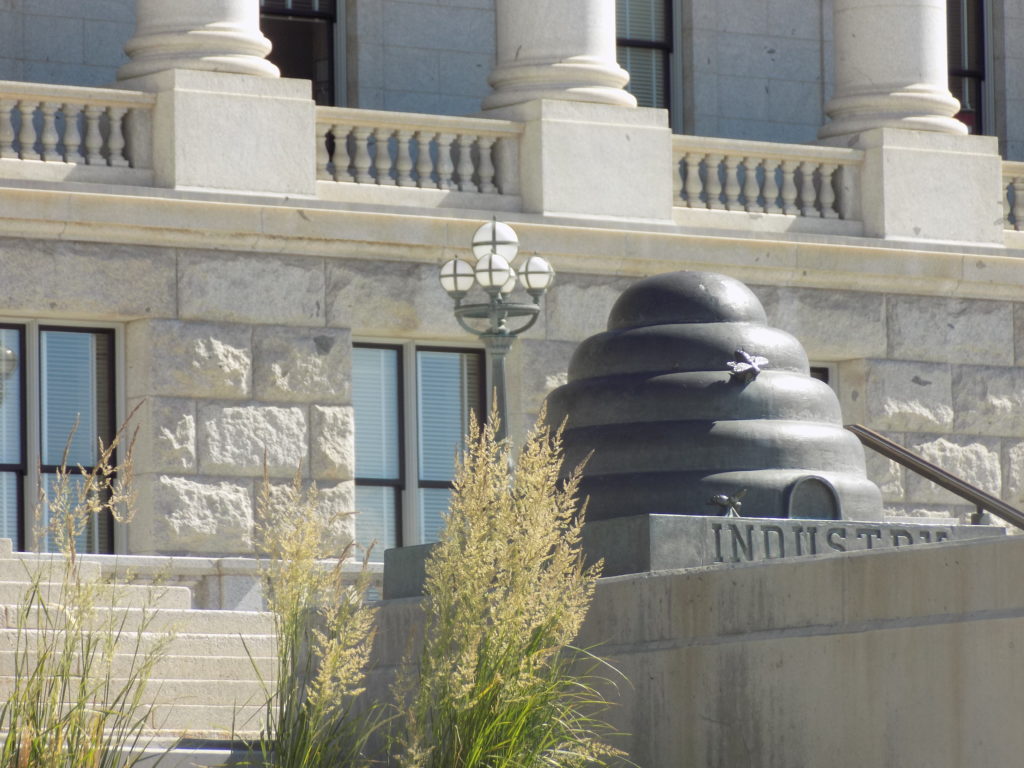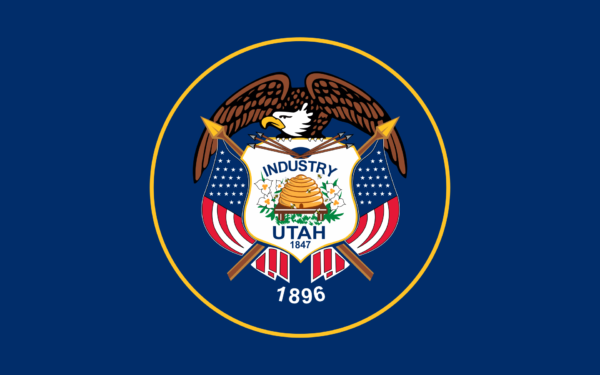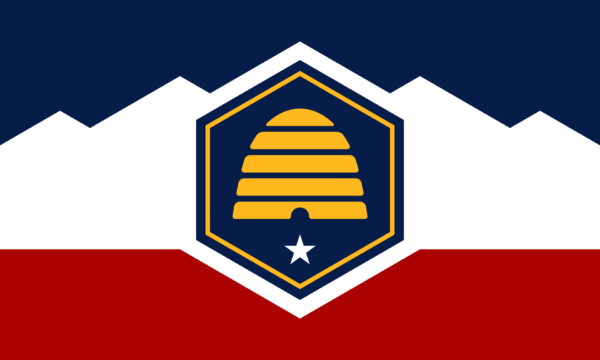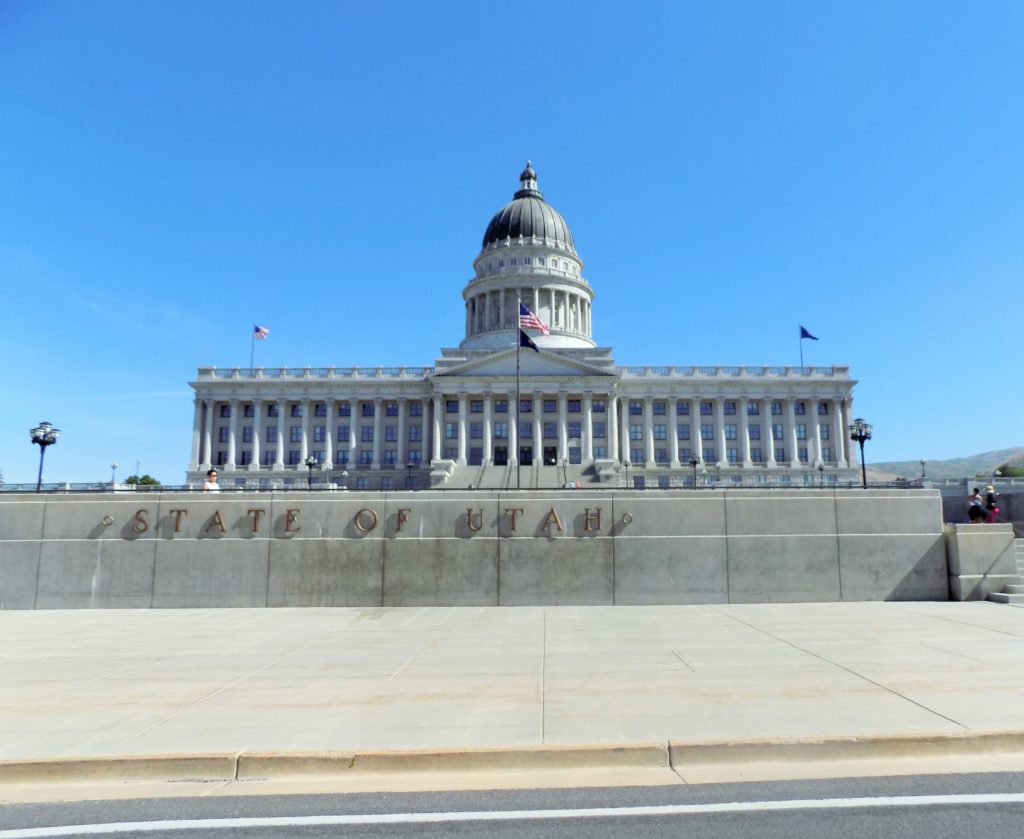Beehive yourself.
My next stop was the state Capitol building where I wanted to see one particular statue that I’ll discuss in the next post. If you enlarge the photo below and look at it very very closely you can see what appears to be a small mound in the distance above and behind the letter U.
Walk close to it and you see what it is:
 Although it sits on a pedestal that reads “INDUSTRY”, and a plaque describes the Beehive as “symbol of industry, the motto of the citizens of Utah”, I had to believe it had a deeper meaning so I set about trying to discover it.
Although it sits on a pedestal that reads “INDUSTRY”, and a plaque describes the Beehive as “symbol of industry, the motto of the citizens of Utah”, I had to believe it had a deeper meaning so I set about trying to discover it.
Even though I’m an atheist, I have an intellectual understanding that many people derive spiritual fulfillment and find moral guidance from their religious belief. I’m not one of them and, frankly, I am confused by the mythos of most religions. And if I find, say, the creation myth of the Hebrews or the miracles of the Christians baffling, it’s fair to say that every time I’ve tried to gain an understanding of the LDS Church (by admittedly superficial reading or conversation), the result has been only greater confusion. I think this was true of my effort to understand the beehive but I’ll share with you my synthesis of the reading I did and leave it to you to find it credulous, incredulous, or decide to investigate it on your own. Or, you could treat it as one of my digressions and simply skip it altogether. (All of my resources are secondary but all reference the Book of Mormon – the actual book, not the musical.)
When the believers of the LDS Church made their final move from Nauvoo, Illinois (which I visited and wrote about on my Great River Road trip) and, following Brigham Young’s declaration, settled in today’s Utah (more on that in a bit), they originally called it the State of Deseret. In fact, their initial petition for statehood in 1849 requested admission under the name Deseret.
One reason Mormons associate themselves with the word deseret is that in the book of Mormon, deseret means honeybee in the language of the Jaredites who were one of four groups – the Nephites, Lamanites, and Mulekites are the other three – whom Mormons believe settled in the ancient Americas.
As nearly as I can tell, while the Jaredites had many admirable traits, they were far from being exemplars of living together harmoniously. Quite directly, according to the Book of Mormon, Jaredites are the descendants of Jared, his brother, their immediate families, and their friends. At the time of the Tower of Babel, Jared appealed to god to exclude his group from having their language confounded and god not only acceded to Jared’s request but also granted them a land of promise.
To reach this promised land, the Jaredites crossed a sea in a 344-day journey in sealed watertight vessels referred to in the Book of Mormon as barges. Neither the ocean they crossed nor the ultimate location of the Jaredite civilization are disclosed in the Book of Mormon. However, in the periodical Times and Seasons, published in the settlement at Nauvoo, Joseph Smith claimed that the Jaredites settled in “the lake country of America.”
Although their economy was basically agrarian, the Jaredites were a settled people, who, in some eras, also mined gold, silver, iron and copper. They built many cities and became a civilization that exceeded two million people. All of this imbues them with the beelike qualities of industry, perseverance, thrift, stability, and self-reliance. Unfortunately, they also abetted their own destruction through persistent internecine warfare. That is all I know. If you have a need to know more, you’re on your own.
Despite the self-destructive behavior of the Jaredites, because Mormons view it as symbolic of industry and the pioneer virtues of thrift and perseverance, the beehive was chosen as the emblem for the provisional State of Deseret in 1848. It remained on the state seal when Utah was admitted to the union in 1896. The beehive became the official state emblem on 4 March 1959 and occupies a central spot on the state flag.

(Note: On 2 March 2023 Utah voted to adopt this new design for its state flag to become official on 9 March 2024.)

(Both photos are from Wikipedia and are public domain.)
If you’re wondering how Deseret became Utah, the U S Congress rejected the original statehood petition in 1849 in part because it came from a vast, relatively unpopulated area that was controlled exclusively by the LDS Church and, in part, because the name just seemed too Mormon. Instead, of admitting them at that time, the federal government significantly downsized the original area (which included much of present-day Nevada, Arizona and southern Idaho) and created the Utah Territory, deriving the name from the resident Ute Indians meaning “People of the Mountains”.
Another crucial factor blocking Utah’s admission was their practice of plural marriage. Several federal laws and an 1879 Supreme Court decision banned the practice so the federal government also required the abolition of the practice of polygamy before they would admit Utah. In fact, Utah petitioned for statehood in 1856, 1862, 1867, 1872, and 1882. All were rejected.
An 1890 statement from church president Wilfred Woodruff disavowing the practice of plural marriage cracked open the door. However, the 1894 act that finally enabled Utah’s admission required that the state constitution ban polygamy. And so it was that two generations after their initial petition, with the name settled, polygamy disavowed and ultimately banned, and a somewhat more diverse population, Utah became the 45th American state.
